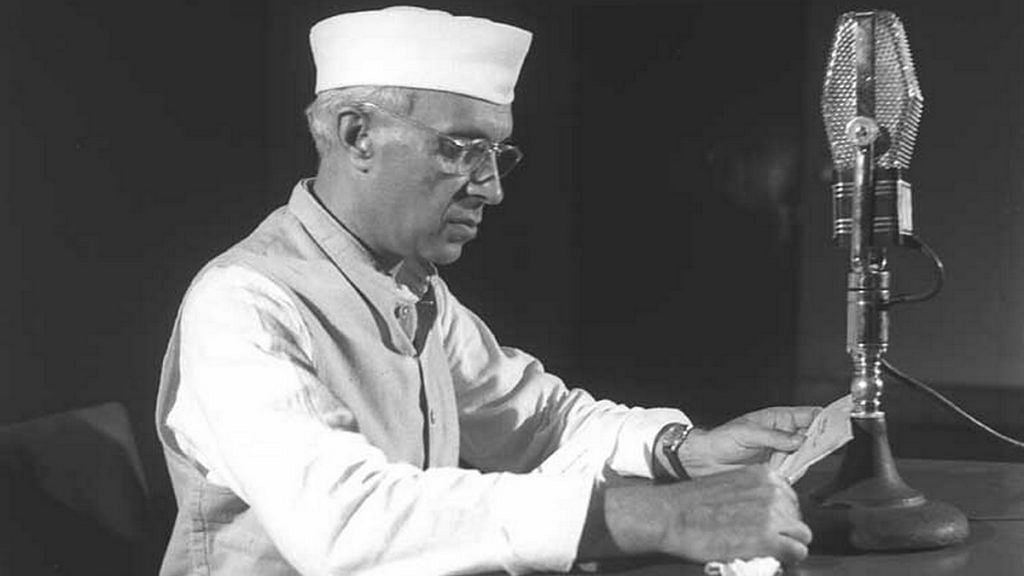Despite evidence to the contrary, an abiding incorrect perception about Nehru’s economic policies is that he alone was the initiator of protectionism in India and that he single-handedly set up a highly damaging socialist model with centralized planning as the mainstay.
A little history will help in clearing this misunderstanding. Prior to Independence, the first Indian Fiscal Commission appointed in 1921 recommended protection for select industries. Subsequently, between 1923 and 1939, in an era of administratively determined exchange rates, the Indian Tariff Board’s deliberations led to higher import duties for a variety of items including iron and steel, cotton textiles, sugar, paper and gold thread.
For some of these products, cheap raw material was first sourced from India. It was in this environment of colonial economic exploitation that the Congress party leaders became followers of the Swadeshi movement led by Gandhi. It was considered a national duty to promote local production of cloth, textiles and other products to generate employment and retain a greater share of the value added within the country.
Also read: Narendra Modi govt turned to Nehruvian strategy for India’s economic growth
The image here is an advertisement from a shop in Lahore in the 1930s.
Also read: Socialism, not secularism, is the central fault line of Indian politics
After Independence, the Congress party continued to mistakenly perceive import substitution as a patriotic duty that promoted local employment. In 1947, India was a country of about 350 million people, an overwhelming majority of whom lived on subsistence agriculture, with relatively little manufacturing or industrial development. Nehru was convinced that the road out of poverty for India’s masses was by adopting a government-driven, but not a totally government-owned, economic model.
In the Constituent Assembly debates, Nehru had affirmed that his government would not nationalize existing Indian or foreign private-sector firms. Even a cursory examination of Nehru’s writings indicates that he wanted the state to take charge of what the private sector could not or did not want to get into. Several well-known economists of that era were doubtful about the prospects of trade-led growth for developing countries. For instance, the well-known Argentinian economist Raul Prebisch, first head of UNESCO (United Nations Educational Scientific and Cultural Organization), felt that terms of trade would be unfavourable for products from developing countries. The Prebisch Singer hypothesis was that the prices of primary commodities decline over time compared to manufactured items, and hence the terms of trade deteriorate for developing countries that produce primary commodities. Nehru’s scepticism about trade was based on this line of thinking in the specialist circles of that time.
The major Indian business houses such as the Birlas and Tatas had gradually come to be identified with the freedom struggle. Gandhi consulted them often and accepted their support. A couple of years before Independence, in 1944, several leading industrialists of that time, including J.R.D. Tata, G.D. Birla, Lala Shri Ram, Purshottam Thakurdas, Ardeshir Dalal, Kasturbhai Lalbhai and John Mathai came up with what came to be known as the Bombay Plan. This plan conceived of raising economic growth rates through government investment for long-gestation projects. Effectively, the captains of private industry, who were the authors of the Bombay Plan, indicated that they did not have the capital or the risk appetite to make the required investments to push growth above pre-Independence levels.
Also read: Remembering Jawaharlal Nehru, the prime minister who shaped a young republic
The Indian private sector also pushed the infant industry argument for protective tariff and non-tariff import barriers. As scarcities persisted and there was enough evidence of hoarding, the environment of permits, licences, controls and foreign exchange restrictions of the Second World War years was continued or tightened after 1947. The fact that the private sector of that time looked to the government to take the lead in raising investment levels indicates that Nehru had less elbow room than is currently claimed, and had to necessarily plan for a large role for government in the economy.
Several of the draconian pieces of economic legislation post Independence had their origins in the Defence of India Act of 1915 which was further tightened in its 1939 version. During the Second World War, in the UK the government ran several of the utilities, including power, water and public transport. Consequently, towards the end of the war, the thinking in UK government circles, even among the Conservatives, including Churchill, was that in post-war Britain, not just the private sector but also ‘state enterprises’, should play an important role in providing employment and rebuilding the country.
Also read: Jawaharlal Nehru’s precious legacy is being undermined daily, says Sonia Gandhi
In a paper in the Journal of Comparative Economics, Rakesh Mohan and Vandana Aggarwal have linked the origins of industrial licensing in India to the controls imposed during the war years. The Labour party came back to power in the UK in 1945, and this government nationalized coal, iron and steel, railroads, utilities and international telecommunications. The Bank of England (central bank) was nationalized in 1946. The UK’s Labour party borrowed the term ‘commanding heights’ of the economy, which is attributed to Lenin by Daniel Yergin and Joseph Stanislaw in their 1998 book. That is, Britain moved sharply towards the left in the wake of the Second World War, and this must have influenced the thinking of the British-educated Indian elite.
This excerpt from The Promise of India: How Prime Ministers Nehru To Modi Shaped The Nation (1947 — 2019) by Jaimini Bhagwati has been published with permission from Penguin Random House India.
